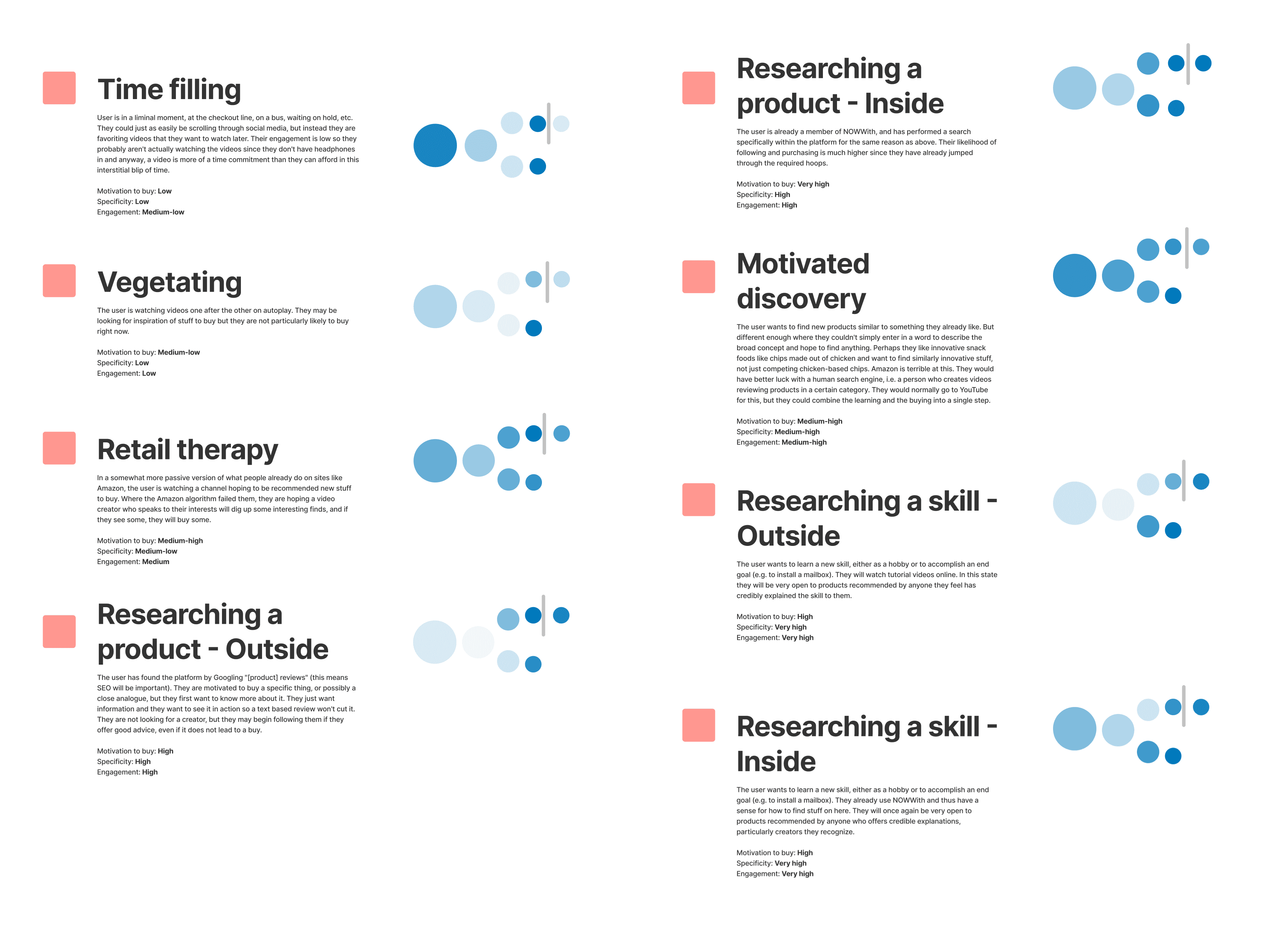We needed research
Up until this point, VideoShops had attempted to build a solution to a problem that we weren't sure actually existed. The market was crowded with other video commerce options, none of which was dominant (many of which would fold). All of the effort was spent finding people who wanted to sell, but none spent find people who wanted to buy.
My first objective was to identify a target demographic and a need that was currently not being served. We still had no UX research team, so I would have to make do. Our company did have marketing teams for connecting to both brands and creators. The latter could help get me access to the Gen Z youth who followed them online.
Through a series of focus groups and interviews with people in our target demographic, we began to identify use cases for video commerce based on how these individuals used things like TikTok, Instagram, YouTube, Amazon, and other e-com sites.
We identified what we called "passively active consumption" as the most promising use case for video commerce. This meant that a user actively wanted to consume a specific type of content, but did not want to spend effort procuring it. This could manifest as killing time on their phone, where discovering products might be seen as more "productive" than watching viral dance trends, or looking to scratch the "buying itch" but not knowing what to get.
Created an ad-hoc UX research team
We wanted to see how this need might potentially be addressed already. As mentioned before, there were a number of competing video commerce systems on the market, and we wanted to research them thoroughly.
Because these platforms were often limited to those who had an existing online presence and followers, we used our relationships with creators to create accounts at these sites and get screenshots. In the end, we got so many screenshots that we could fill several Figma files to capacity.


